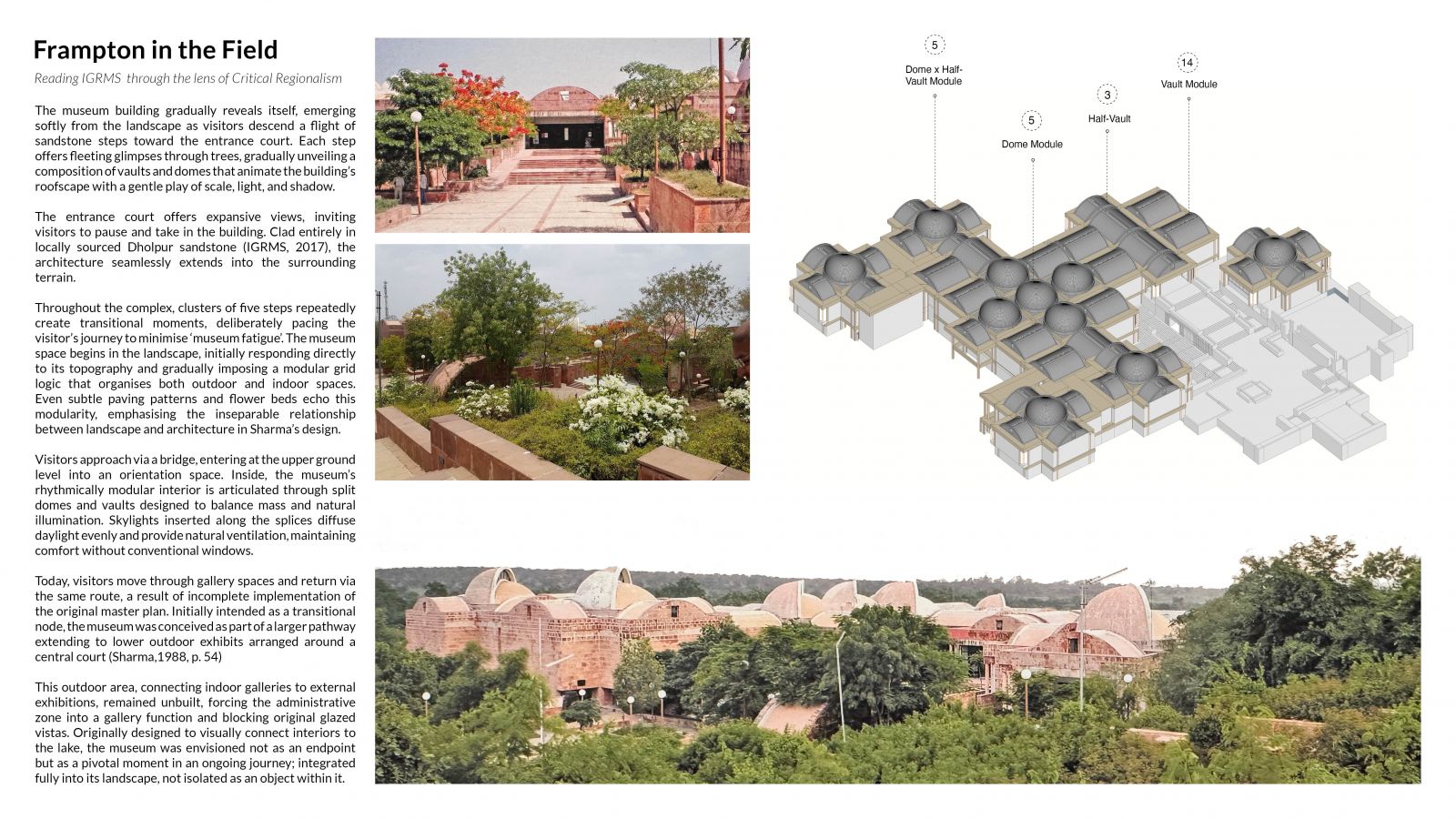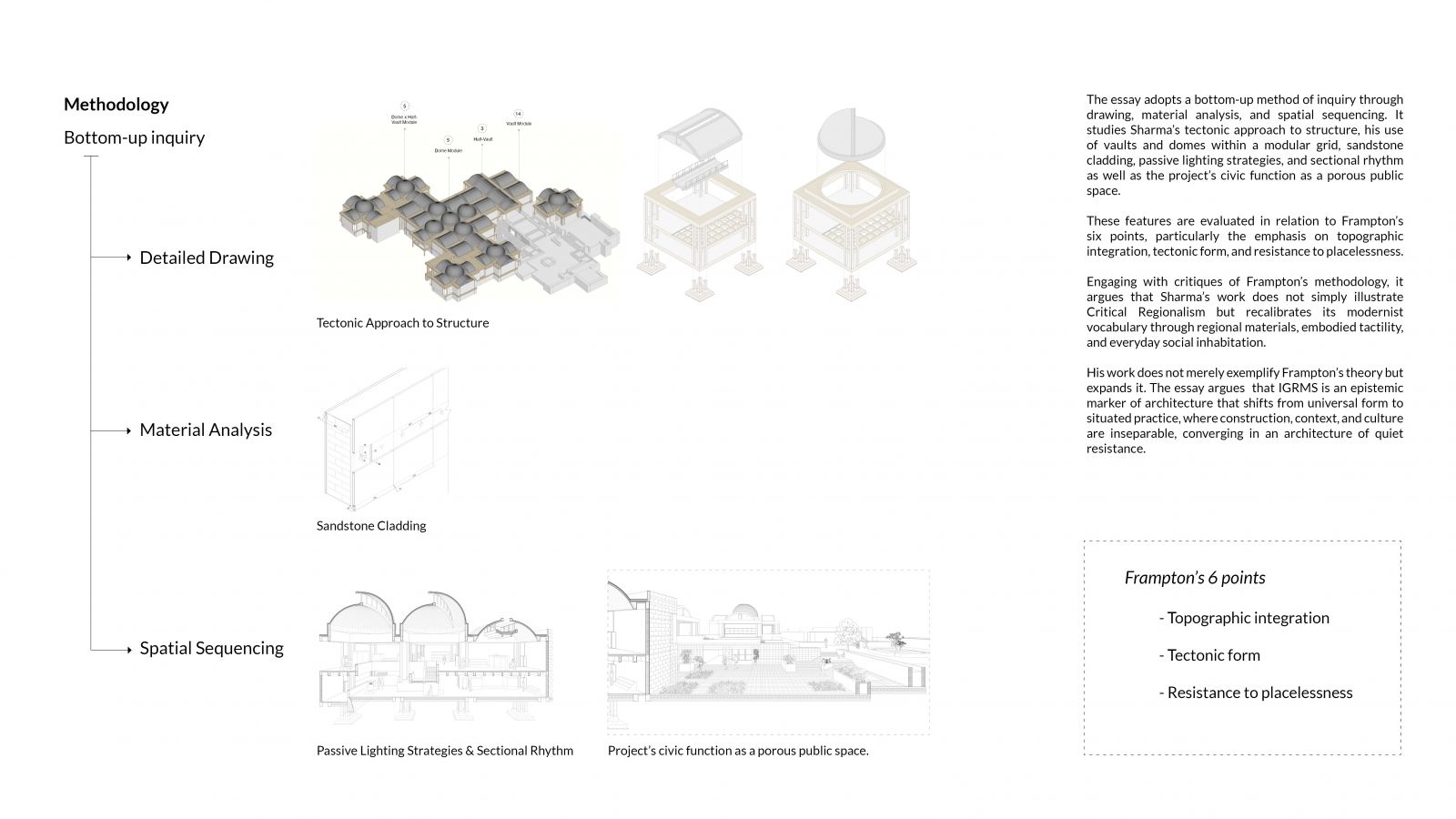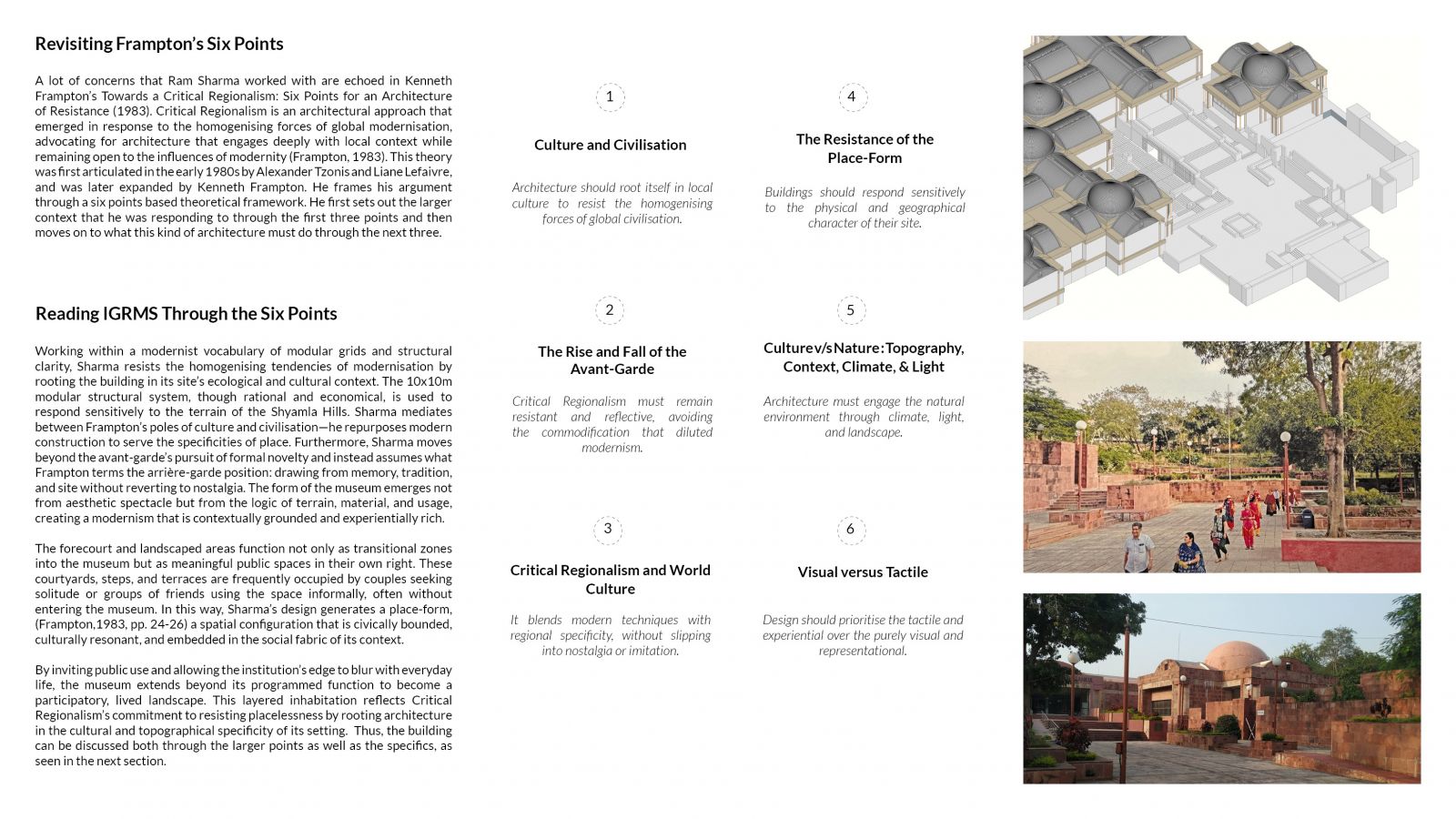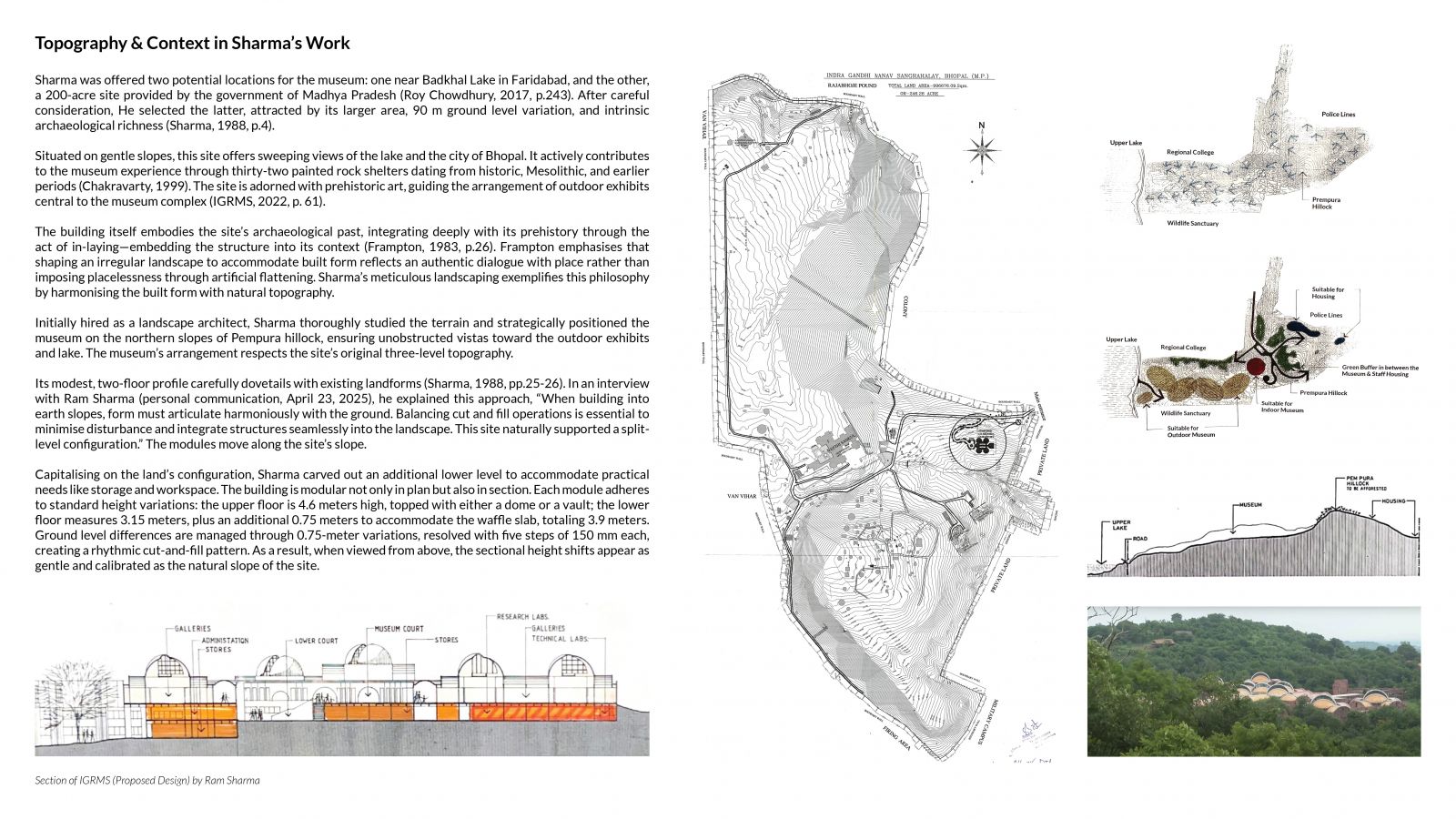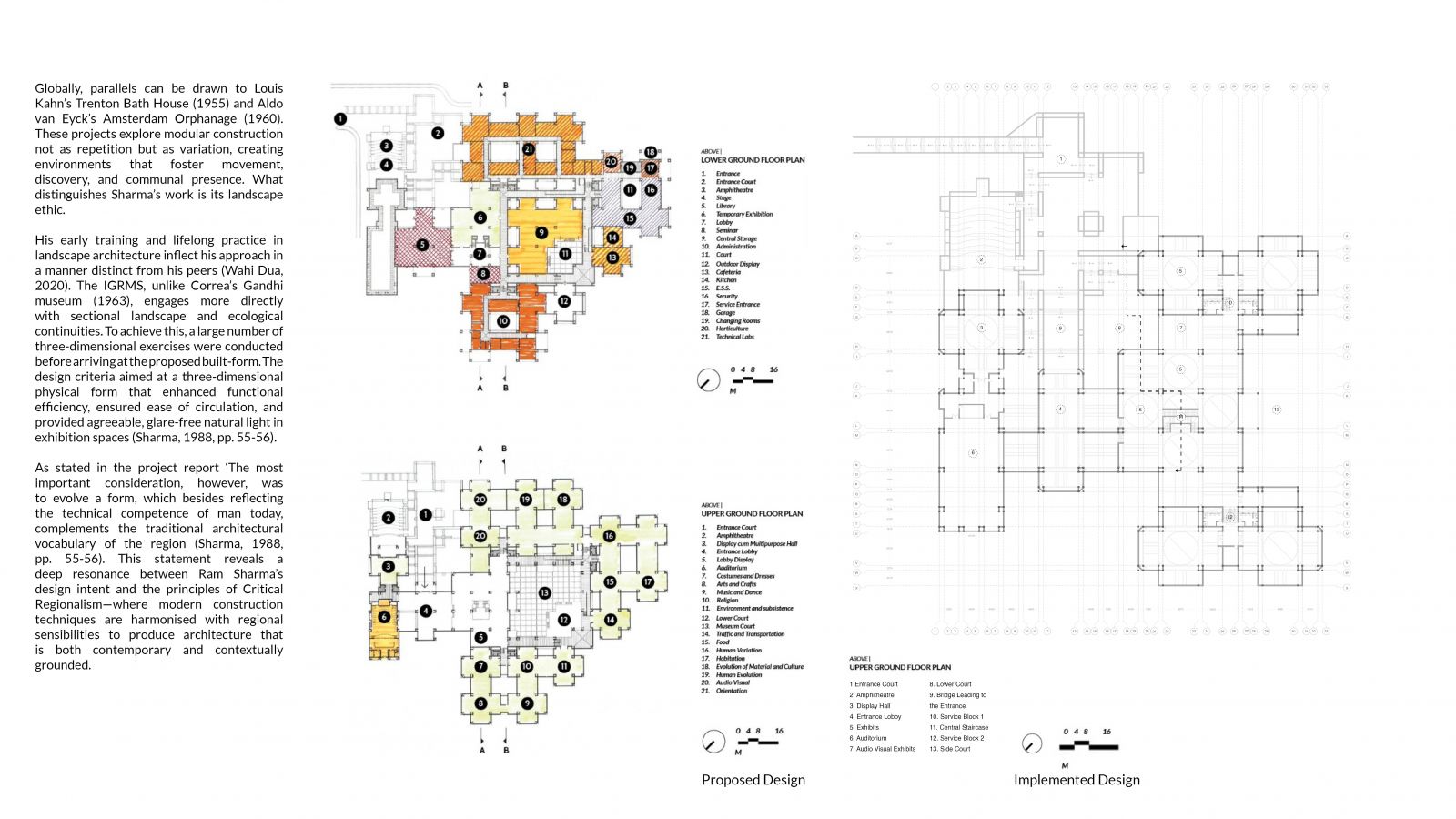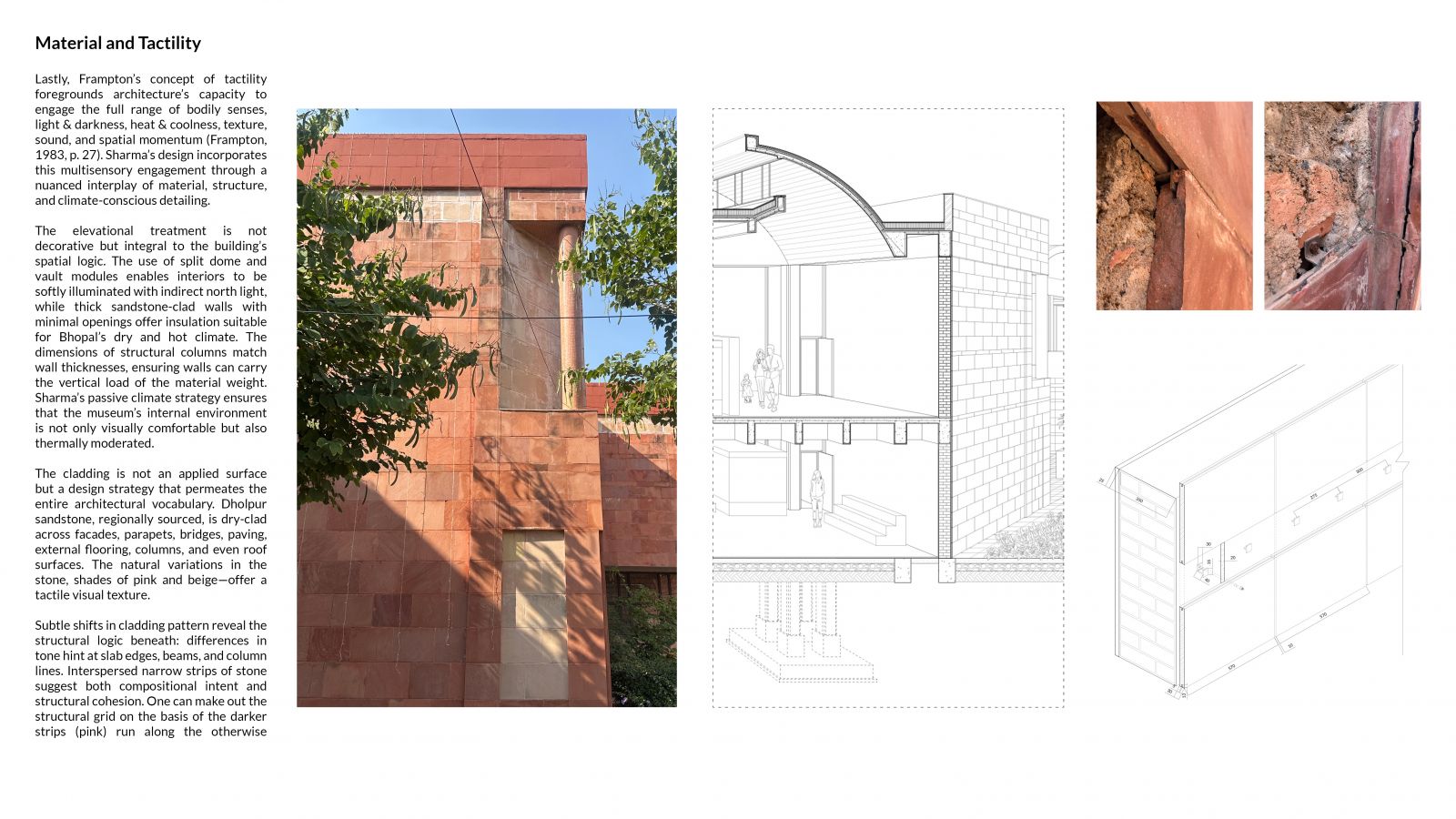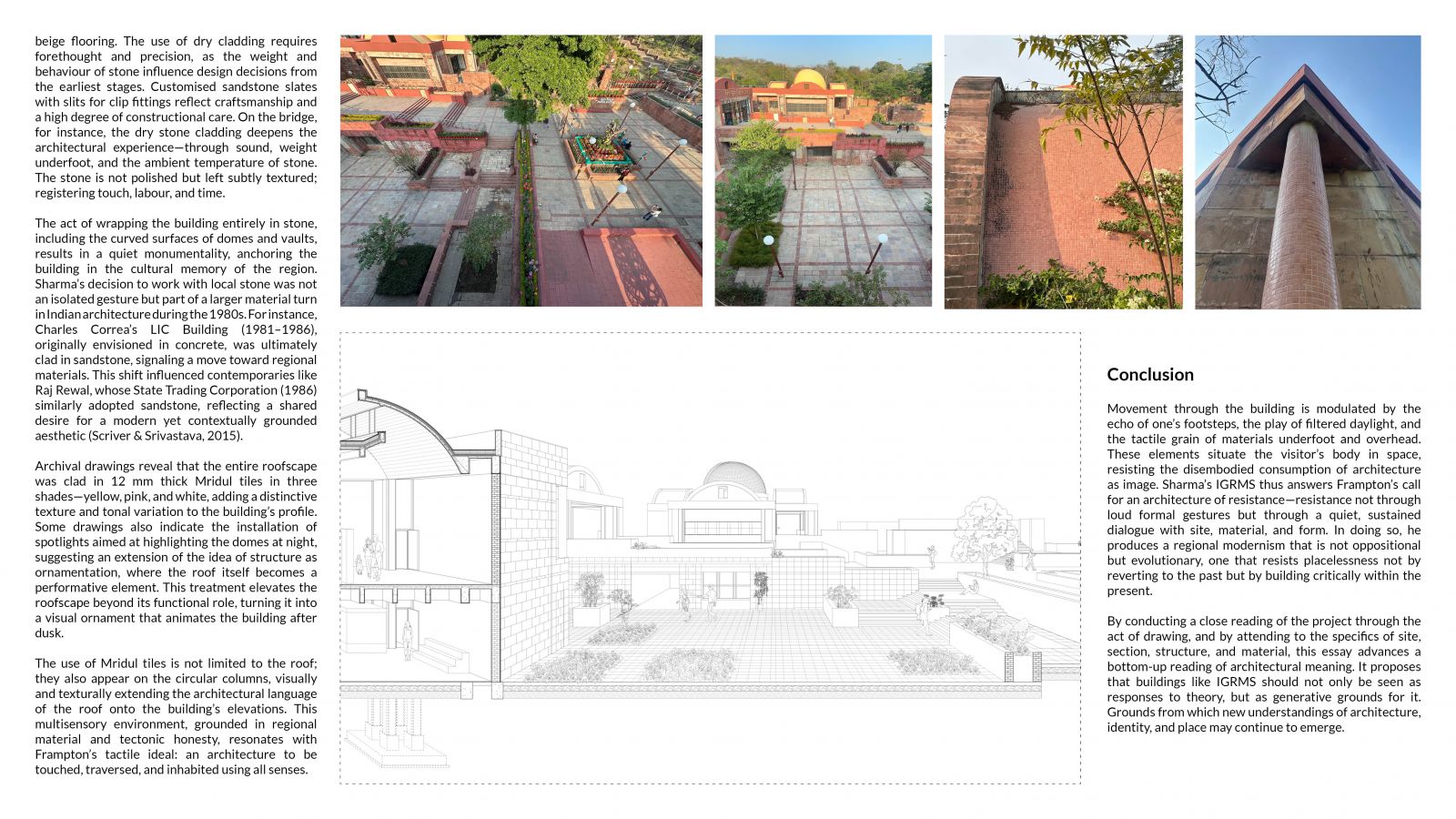Your browser is out-of-date!
For a richer surfing experience on our website, please update your browser. Update my browser now!
For a richer surfing experience on our website, please update your browser. Update my browser now!
This essay examines how Ram Sharma’s design for the Indira Gandhi Rashtriya Manav Sangrahalaya (IGRMS) in Bhopal engages with and extends Kenneth Frampton’s framework of Critical Regionalism. Using a bottom-up methodology involving drawing, material analysis, and spatial sequencing, it explores the museum’s integration with the landscape, tectonic articulation, and civic porosity. Analysing elements such as sandstone cladding, structural modules, and passive lighting, the essay finds that Sharma’s architecture reinterprets modernist principles through regional materials and embodied inhabitation. IGRMS emerges as a site-specific, epistemic practice—an architecture of quiet resistance where construction, context, and culture are deeply interwoven.
View Additional Work